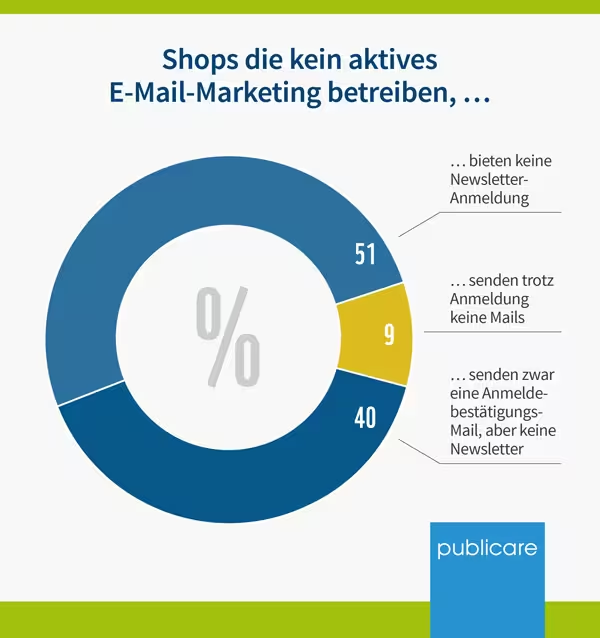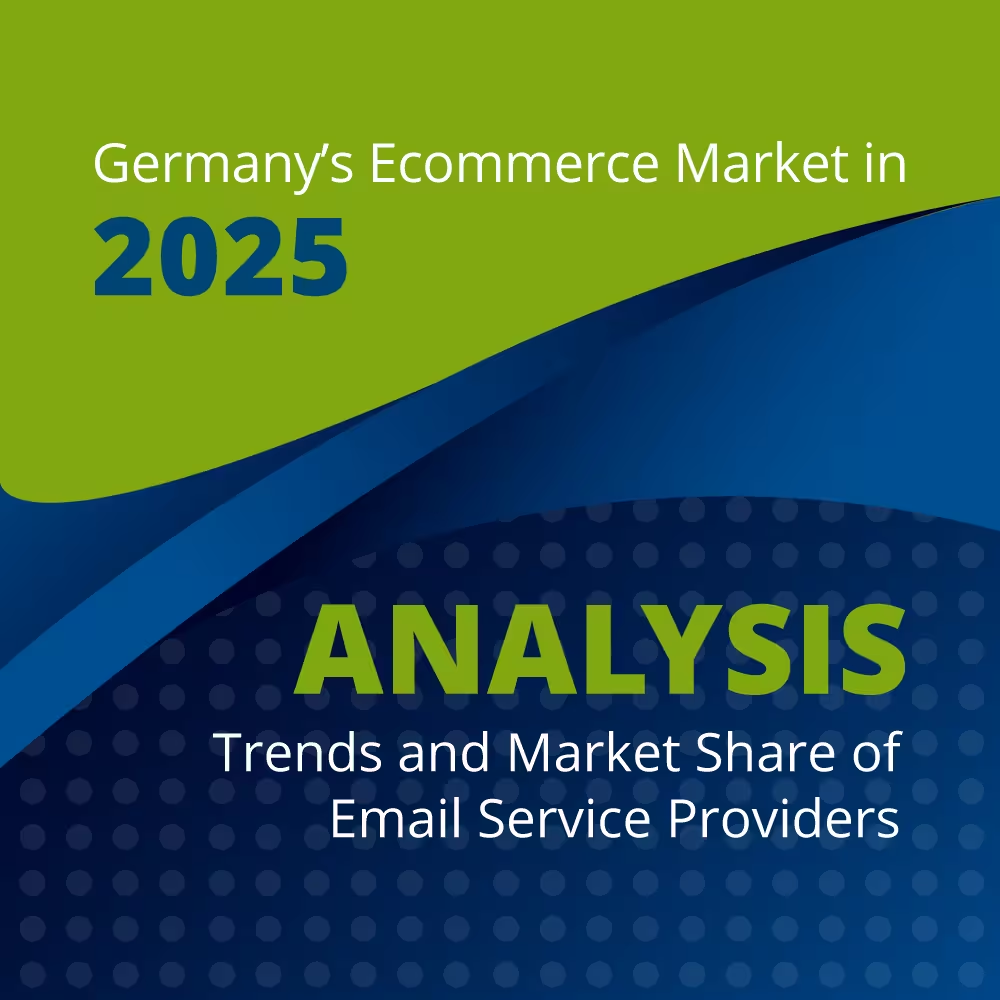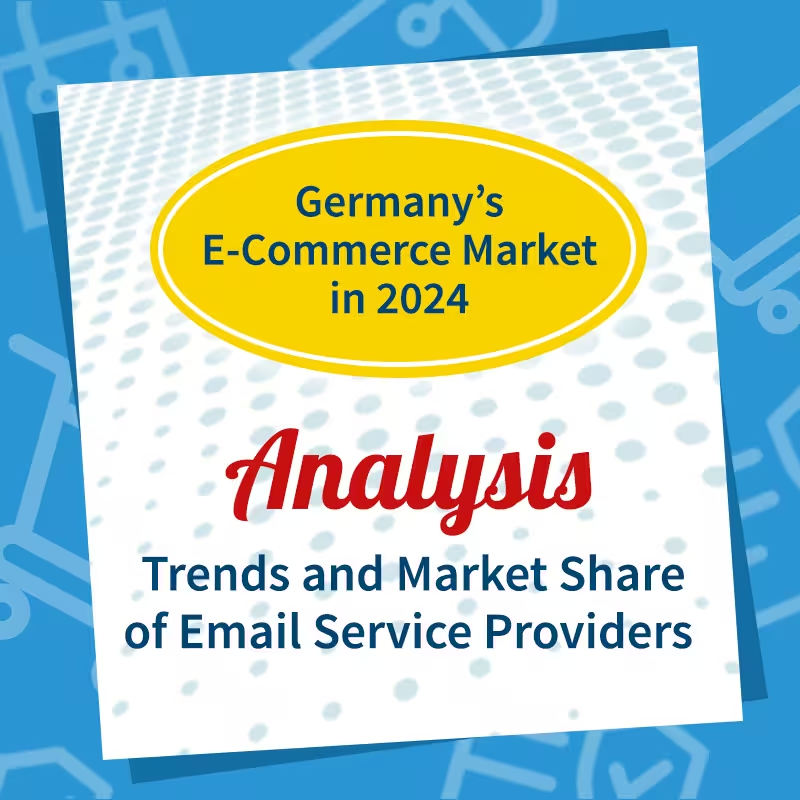87% of online shops send emails — what about the rest?
Email marketing is still one of the most important marketing channels in German e-commerce. We were able to prove this once again in 2020 as part of the study”German e-commerce market 2020“from EHI Retail Institute and Statista: 934 of the shops examined offer an e-mail subscription, 872 sent us at least one marketing email during the three-month investigation period (Pure confirmation and opt-in emails are deliberately excluded).

Here you can find the latest analysis results for Email marketing of the top 1000 e-commerce companies in Germany 2024
EHI Top 1,000 e-commerce: Which shops refrain from email marketing
But as in previous years, there are a few of the top 1,000 online shops in Germany that do not send out newsletters. 66 shops do not offer an email subscription on their website (6.6 %*, in the previous year 4.5%). Overall, the number of companies that offer an e-mail newsletter subscription on the website but then do not send any emails has increased compared to the previous year. In 2019, we received an email from 924 online shops during the investigation period, this year from 872. Of half of the shops without email delivery in 2020, we only received a confirmation email and never received a marketing email.
Is it primarily the smaller of the 1,000 top-selling shops that refrain from sending emails? 460 of the top 500 top-selling shops continue to send email newsletters in 2020 (92.0%) — significantly more than the average of 87.2%. In the top 100, there are only 4 stores that do not offer an email marketing subscription, the sender rate is therefore even higher at 96.0% **. Online shops without active email marketing are primarily found in the second half of the EHI e-commerce operator ranking (68.8%).
Why do significantly more small shops refrain from sending emails than larger ones? Is it due to a lack of (marketing) resources?
Subscription yes, email no — possible reasons
Is sending emails only worthwhile once a critical mass of subscribers has been reached in the mailing list so that the costs per email are correspondingly lower? Some online shops are still suffering from the effects of the General Data Protection Regulation. In 2018, many e-commerce operators were forced to shrink their recipient lists and start virtually from scratch with a new GDPR-compliant address collection. For online shops with smaller recipient potential, the effort and basic costs for content development, newsletter production, email delivery management, etc., may be unfavorable in relation to the expected (additional) income.
This critical recipient potential is basically nothing more than the target group. Many of the online shops without newsletter delivery are specialized (niche) shops whose target groups have a differentiated interest in special products. Our assumption, based on individual discussions with shop operators: The cross-selling potential of highly specialized shops is often rather low and/or the effort required to prepare meaningful content for a newsletter for their professionally well-informed clientele is too high. These shops often maintain good direct contact with their buyers via their hotline or chats or forums. Direct advice is often a better way to respond to the customer than via a (mass) e-mail. A look at the social media activities of shops without email marketing shows that around half are active on Facebook, some are also active on Instagram; the Twitter, YouTube, Pinterest or Snapchat channels are less common among them.
Small and medium-sized companies need pragmatic approaches to carry out email marketing with manageable effort, for example with flexible templates and a minimum of graphics and programming requirements. An editorial plan and a thorough review and preparation of the existing, but usually decentralized, content elements within the company serve as the basis for efficient newsletter creation. The highly differentiated market offers technical solutions for almost every requirement — even for smaller budgets, there is the right strategy and the right tool.
*Basis: The 1,000 best-selling German B2C online stores for physical goods 2020, determined by EHI Retail Institute for the “E-Commerce Market Germany 2020" study, sorted by e-commerce sales in fiscal year 2019.
**Basis: 128 shops of the 1,000 shops, of which we have in the investigation period of at least 3 months none Have received a marketing email.















